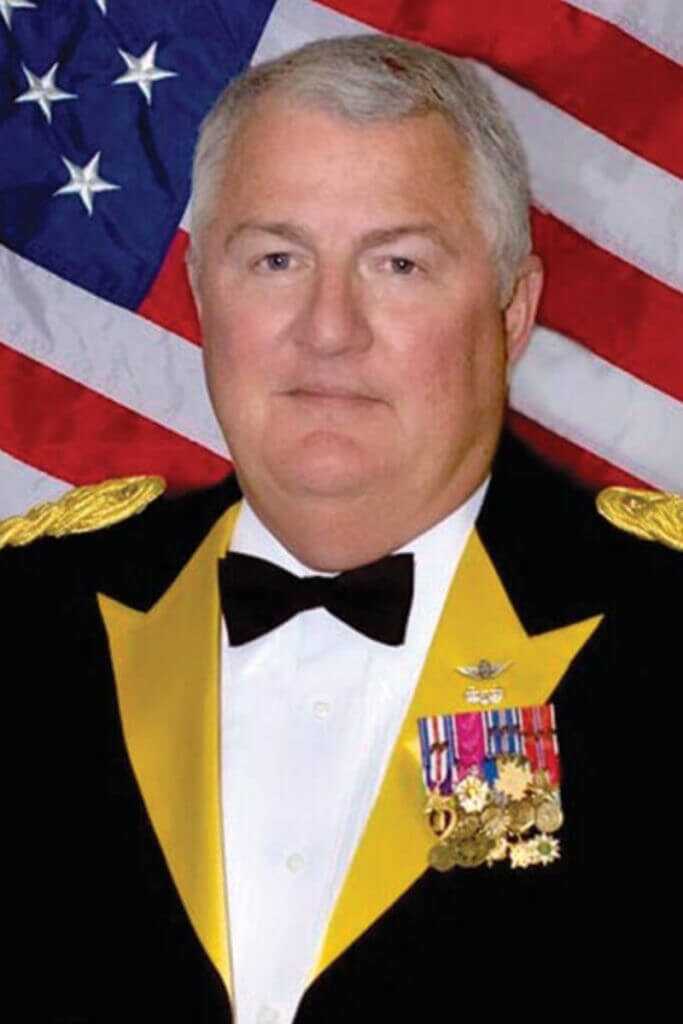

LT Hugh Mills earned three Silver Stars, three Bronze Stars, four Distinguished Flying Crosses, and the Legion of Merit during three tours as a combat helicopter pilot in Vietnam. Mills was shot down sixteen times and thrice wounded in combat. He flew 3,300 combat hours in OH6A and AH1G helicopters.


The Hughes OH6 Light Observation Helicopter (LOH) was affectionately known as the Loach by all who encountered it. Looking much like a giant angry bumblebee, the Loach was fast, nimble, and crashworthy. Improved versions soldier on as MH6 and AH6 Little Birds with the TF160 Night Stalkers today.

The OH6 was supplanted in US military service by the Bell OH58. Though entirely different designs both of these aircraft shared a common engine. I flew OH58’s myself, but we all mourned the passing of the Loach. It was a massively better aircraft.
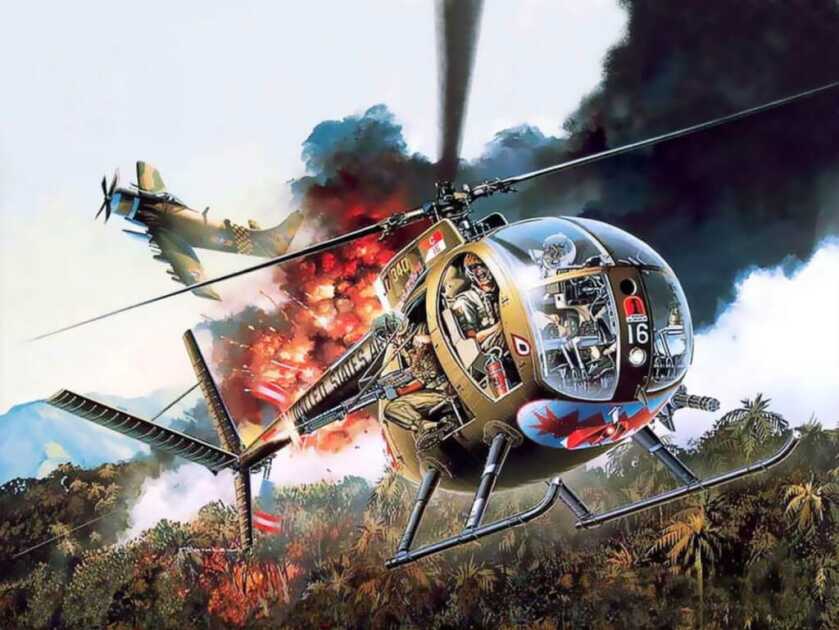
For operations in Vietnam, the Loach was typically flown single pilot. In helicopters, the command pilot sits on the right. Behind the pilot also on the right was a crew chief armed with an M60 belt-fed machinegun. The crew chief also had access to a variety of smoke, frag, and white phosphorus grenades. Counterbalancing the two-man crew on the other side of the aircraft was typically an M134 minigun in an XM27E1 mount along with its 2,000-round ammunition load.

The M134 minigun was an electrically-driven 7.62x51mm Gatling gun featuring two different rates of fire. Pulling the trigger on the cyclic stick partway back ran the gun at 2,000 rounds per minute. A full pull resulted in 4,000 rpm. In Vietnam, the gun was typically aimed by means of a simple grease pencil mark on the Plexiglass bubble.


A Hunter Killer team consisted of a Loach flying extreme low level while a Cobra gunship trailed behind at 1,500 feet or so to provide fire support. These aircraft were in constant radio communication. The scout crew would identify targets and then break off to allow the Snake to engage with rockets, miniguns, and automatic grenade launchers.
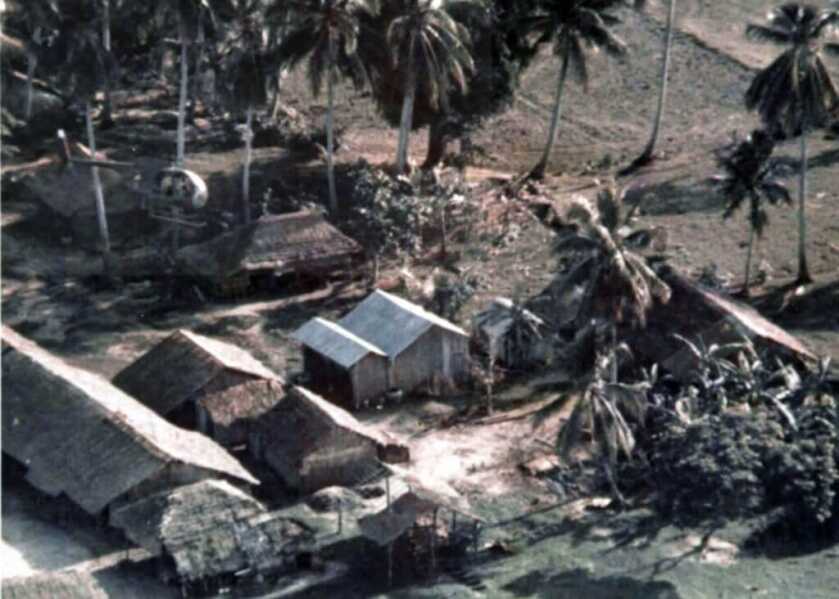
The use of helicopters in combat was pioneered during the Vietnam War. Aviators like LT Mills figured it out as they went along. The end result was some of the grittiest combat in the history of modern warfare.
War Story

It was the summer of 1969 and LT Mills was on a routine trip to Dau Tieng for a briefing with the Brigade S3 operations staff. In the back of his Loach was Jim Parker, his regular crew chief. Paul Fishman flew the Cobra gunship that was his cover. None of the American aircrew were looking for trouble, so Mills was enjoying a little vigorous NOE (Nap of the Earth) flying.

NOE is the reason God made combat helicopters. NOE in an Aeroscout aircraft means tearing along five feet or so off the ground sans doors following the contours of the ground while maneuvering to avoid obstacles. The biggest difference between NOE flying back then and the same thing in my day was that, thanks to night vision goggles, we could also do it in the dark.

As LT Mills popped over a modest treeline he happened upon an NVA heavy weapons platoon. All involved were comparably surprised. It was on.

Mills opened up with his minigun. AK47 fire rose up from all directions while Jim Parker engaged NVA troops with his sixty. The end result was unfettered chaos.

As the NVA soldiers ran for cover a pair of them charged down a paddy dike. The rearmost soldier had a large black rice-cooking pot affixed to his back. Mills aligned his Loach with the running man, centered his grease pencil mark on the pot, and squeezed the trigger on his cyclic. His minigun buzzed out a burst that passed through the closest soldier and killed the man running ahead of him as well.
The Gun

Richard Jordan Gatling was trained as a physician but never practiced medicine. He was by profession an inventor, contriving designs for an automatic seed planter, a screw propeller, a steam tractor, and an improved toilet, to name but a few. What most ties him to history, however, was the multi-barrel gun that will forever bear his name.

Dr. Gatling envisioned his weapon as a mechanism to depopulate battlefields. He rather naively believed that by providing armies with such efficient weapons fewer troops would be needed, and overall casualties from both combat action and disease would therefore be minimized. The reality was obviously not quite so tidy.

In July of 1893 Gatling was awarded a patent for an electrically-powered version of his gun. This weapon sported ten barrels chambered in .30 Army and was driven by a belt drive attached to an electric motor. This gun ran at around 1,500 rounds per minute.

Developed in 1963, the GE M134 minigun was an evolutionary development of the M61 Vulcan 20mm aircraft cannon. Featuring six 22-inch barrels and chambered in 7.62x51mm, the M134 could cycle reliably at rates up to 6,000 rpm. The gun weighed 85 pounds and was 31.5 inches long. Some 10,000 miniguns were used during the Vietnam War.


In the late 1990’s Dillon Aero purchased several used miniguns from a foreign user and upgraded the design. Designated the M134D, these modernized versions found an enthusiastic home with the Army’s TF160 Special Operations Aviation Regiment. These weapons are widely used on AH6, MH60, and MH47 aircraft today. Dillon miniguns have since been exported to dozens of friendly countries as well.
The Rest of the Story

Mills darted his Loach back and forth around the little clearing, engaging NVA soldiers as they scattered. His crew chief did the same thing until his M60 ran dry. At one point Parker had to get Mills to level the wildly maneuvering aircraft so he could get a clear shot without perforating his own rotor blades.

As Parker’s gun fell silent, Mills lined up on another target and squeezed his trigger. His only answer was the spinning barrels of his Gatling gun, its ammo supply exhausted. Parker then engaged the remaining NVA with his personal M16 and finally an Ithaca pump-action 12-gauge shotgun he kept underneath his seat.

Mills carried an M1911 .45 on his belt and a .357 Magnum Colt Python in a shoulder holster. Steadying the collective with his left knee he flew the aircraft with his right hand while shooting his Python left-handed out of the right door of the aircraft. He expended all six Super Vel Magnum loads before finally breaking clear to make room for the hungry Cobra orbiting above.

Fishman rolled hot with his Snake and blew the treeline to pieces with 2.75-inch rockets. He punctuated his run with flechette warheads. These diabolical monsters flew a set distance out from the aircraft before bursting automatically with a visible puff of red smoke. At that point the warhead released a thick cloud of 1,180 pressed steel darts.

These flechettes look like finishing nails with little stabilizing fins pressed into their rear ends. Thousands of these tiny darts would absolutely shred soft targets in the manner of a gigantic shotgun. Ouch.

A replacement Hunter Killer team was soon on station allowing Mills and Fishman to return to base at Phu Loi. Once Mills landed his Loach he took stock.

The aircraft had been hit a total of twenty-five times. The airspeed indicator and altimeter were both blown away. The armor plate underneath Parker’s seat stopped two rounds, while Mills’ seat armor caught several as well. Five rounds passed through the Plexiglas canopy, two perfed the tail boom, and three bullets ventilated the rotor blades.

One AK slug passed all the way through the engine compartment, miraculously missing anything vital. One round tore the op rod off of Parker’s M60 and left a half-moon crescent in the bottom of the barrel. Between Mills’ minigun, Parker’s -60, and their personal weapons the two men had expended several thousand rounds in less than 120 seconds of frenetic combat.

ARP (Aero Rifle Platoon) grunts subsequently inserted via UH1 Hueys and swept through the area. They cataloged 26 KIA and captured a pair of POWs, recovering a large number of AK47 rifles, a 60mm mortar, a pair of Russian pistols, and an SGM heavy machinegun. They also came back with a cooking pot sporting some twenty-four 7.62mm bullet holes.

LT Mills’ combat memoir Low Level Hell is one of the most compelling accounts of modern combat I have ever read. The prose reads like an action novel, and it is chock full of gun stuff. The details about the weapons they carried, captured, and wielded from their aircraft are worth the read, while the gripping nature of the action is red meat to guys like us. The book is available on Amazon.
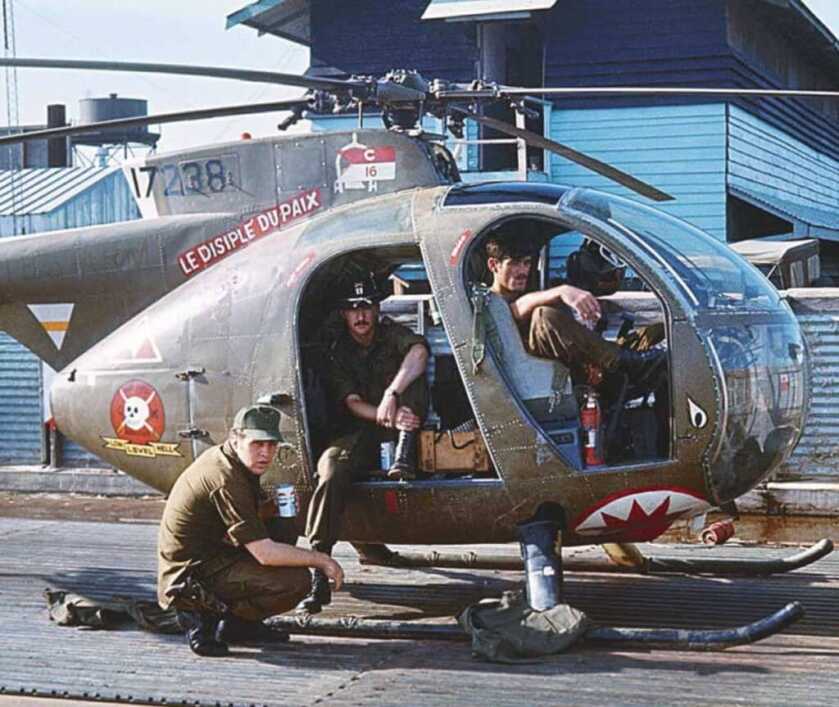
We have discussed aviators’ personal weapons in Vietnam here before. Here’s the link.
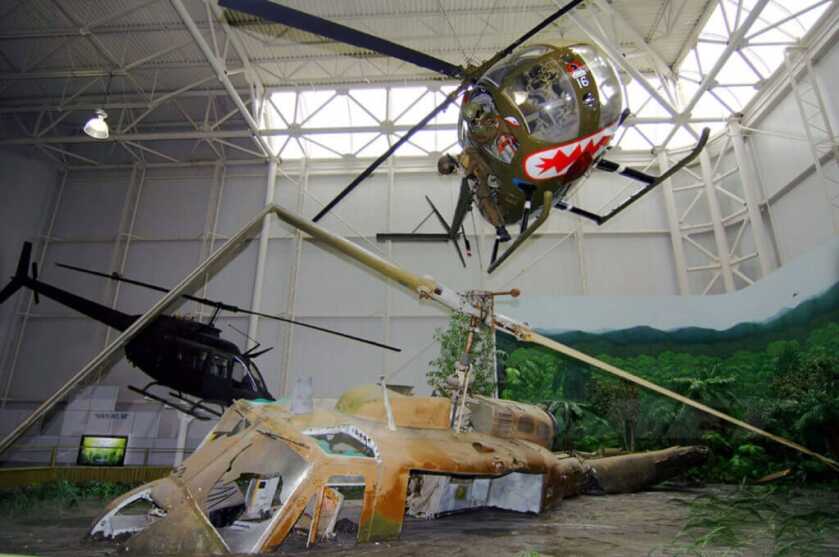


Mills’ original Loach, Miss Clawd IV, is on permanent display in the US Army Aviation Museum at Fort Rucker today.
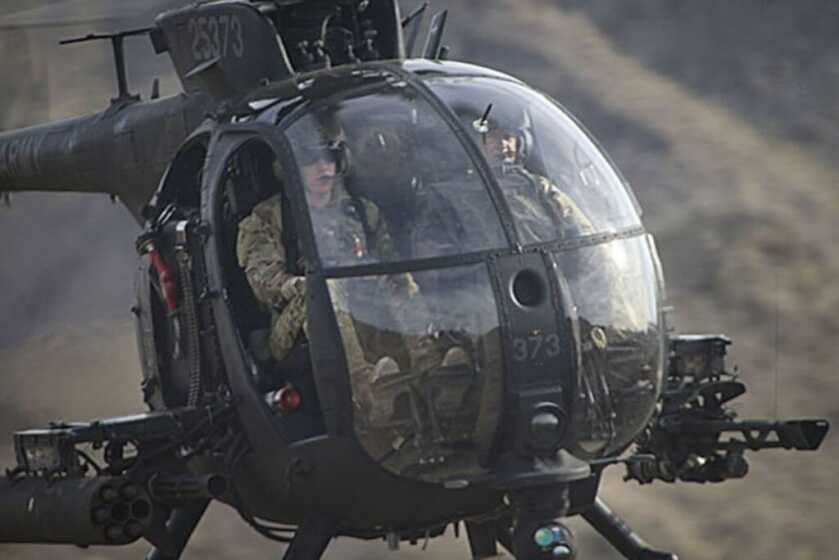


I appreciate your comments. Old LOH pilots need love too!
LTC Mills–wow. I grew up reading your stories in the back of the Gunslingers–In Action book. That was one of the big reasons I went into Army Aviation myself. Sincerely, thanks for your service.
Will Dabbs MD
formerly
Will Dabbs, MAJ, AV
Got a “free” (read that as “mandatory”) OH-6A transition after graduation followed by attendance to the newly created Air Cav Scout School at Ft. Knox. Really liked the OH-6 but had been trained in “Guns” during tactics. Ended up spending a year between a pair of XM-134s flying Charlie/Mike Models and considered myself lucky as I was in a great Assault Helicopter Company and an even better Gun Platoon. Thanks for your service and for the story. regards, Alemaster
A great read, thanks! I was a Cobra pilot in the ‘Corps 1983-90. When I started out, we flew AH-1Js, some of which supposedly still had bullet holes patched in the tail booms from ‘Nam. Around ’87 we transitioned to the Whiskey (AH-1W), which overall was a much more powerful, capable aircraft. But I always missed the more ‘sports-car’ -like maneuverability of the J’s. Kudos and much respect to Mills and his fellow “skid kids” from that era.
Mad Max, HMLA-369, HMA-775
Talk about Courage under Fire, my pulse rate spiked just reading . Outstanding account of bravery.
I really enjoy your articles Dr. Dabbs. Thank You. It was fitting that I read this one on Memorial Day. My cousin was a SFC in F Troop 8th Cav. He flew as an observer in the Loaches. He was shot down just NE of Tam Ky in 1969. The gun ships with them thought a lucky shot hit the metal can with the WP grenades they used to mark targets. He loved the Army and today I remember him more than usual. Thanks for adding to my knowledge of these choppers.
The best fight instruction I have ever received in my life was from the Vietnam helicopter pilots that were Instructor pilots at Bell Helicopter who flew these helicopters along with the Huey. They taught me things that is not even listed as a teachable skill by the FAA or the Army civilian contractors that teach flight training. I have also attended the factory MD 530F school which is the high altitude modern version of the Loach. It is a fast and wicked little machine that is built for crew survival when you go down. Great article glad to see the write up!
Having gone down in a LOH myself in 68, I really enjoyed this article. The 1st CAV, 1/9 got them early when we ran out of oh-13’s. The LOH was SO MUCH faster and more agile, we got rather cocky with them. i was shot down only once, but had another shot up so badly that it never flew again. I t did bring back to medivac pad though. I loved those birds and I really enjoy your writings and look forward to them.
Mr. Dabbs your stories are outstanding please continue! The only negative is whenever you mention a book in your story I end up spending money for it! Great, great piece of writing.
Always enjoy reading a Will Dabbs article.
Thank You, Thank You, Thank You
Two things I’d like to point out. The story failed to mention the the Gatling gun was invented early in the Civil War and was offered to the north. However they didnt trust the inventor because he was from the south and thought if they produced it then the guy would steal the completed weapons and give them to the south.
Yes we had a lot of helicopters shoot down in Vietnam but the majority were recovered, repaired and put back into service.
Gentlemen, below and elsewhere, thank you for your service.
God bless our Constitutional Republic!
Amen!
We had several of these Loach’s working with our unit in August 1967. We called them bumble bees as the sound they made & the moves they made were so eradicate. Brave men for sure, Them and the Air Force bird dogs. As a grunt with the 196th Light Infantry Brigade were were always glad to see these guys coming in for sure.
Sgt. Marty
D/2/1 196tyh Light Infantry (Air mobile) Delta 2/1 2nd platton 1st squad, 1967. RSVN
Great story. Enjoyed reading.